 |
Picks is a monthly sampling of Japan's art scene, offering short reviews of exhibitions at museums and galleries in recent weeks, with an emphasis on contemporary art by young artists. |
 |
 |
 |
1 December 2010 |
 |
| 1 | 2 | |
 |
|
 |
 |
|
|
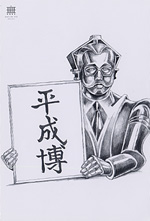 |
 |
| Sachiko Kazama: Heisei Expo 2010 |
| 7 October - 27 November 2010 |
Mujin-to Production
(Tokyo) |
 |
| Kazama produces unusual woodcuts that satirize the times we live in. Whereas satirists like Honoré Daumier and George Grosz employed the print medium to seek a broader audience for their social commentary, Kazama only produces one print per work. This would seem to render her choice of media rather pointless, but there is no doubting the powerful appeal of her thick black lines. Besides her woodcuts, a display of commemorative postcards of expositions held in Japan before and during the war is eye-catching as well. |
|
|
 |
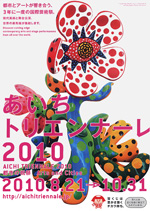 |
 |
| Aichi Triennale 2010 |
| 21 August - 31 October 2010 |
Various locations in Nagoya
(Aichi) |
 |
| Chinese film artist Yang Fudong's installation at the Nayabashi site had over a dozen ancient-looking film projectors in a large indoor space -- a former bowling alley -- projecting movies onto all four walls. The films were in black and white and seemed to be either action or romance flicks. It was hard to tell if they were existing works or new ones by the artist, because only fragmentary scenes were looped. With no seating, viewers stood, or sat on the floor, or leaned against the nearest wall, as at an outdoor screening; augmenting the nostalgic mood were the noise and heat of the projectors. Yang seemed intent on creating an ambience diametrically opposite that of the typical international film festival. |
|
|
|
|

|
 |
 |
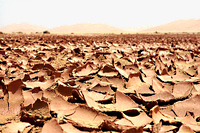 |
 |
| Syoin Kajii: KAWA |
| 17 September - 16 October 2010 |
Foil Gallery
(Tokyo) |
 |
| In his debut series NAMI ("Wave"), Buddhist priest/photographer Kajii displayed a thorough immersion in the act of "seeing" that summoned up a power extending beyond the limits of sensory perception. His new series KAWA ("River"; the show is concurrent with the publication by Foil of a photo book by the same title) reflects fundamentally the same pursuit of waveforms in water, shot close-up and head-on. |
|
|
 |
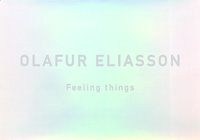 |
 |
| Olafur Eliasson: Feeling Things |
| 28 September - 28 October 2010 |
|
Gallery Koyanagi
(Tokyo) |
 |
| In the first room, seven lamps on the floor emit light, projecting multiple shadows of visitors passing by onto the walls. In the next room, six lamps with color filters project colored shadows (in complementary-color relationships). The last room features a video shot by attaching a mirror to the side of a car and driving through city streets at night. The intermingling of real and mirror images creates a truly lovely work -- but, aside from improved resolution, it doesn't seem much different from things that were being done in the seventies. |
|
|
|
|
|
|
|

|
 |
 |
 |
 |
| Yukiko Tomita |
25 September - 9 October 2010
|
Gallery Tsubaki
(Tokyo) |
 |
| Tomita is known for her paintings of flowers and fruit up close, front and center. These works, however, are a bit different. Granted, there are plenty of flowers and fruit, but also paintings that show distant landscapes viewed through what appear to be tunnels or caves, or the sky seen through a grove of trees. In all of these compositions, the distant scene at the center of the canvas is bright, while the most immediate surroundings (in the cave, among the trees, etc.) are darkest. Flowers, fruit, tunnels, caves . . . as obvious symbols of the female sex, these works no doubt provide prime fodder for psychoanalysis. |
|
|
 |
 |
| Hua Qing: "Thinking" |
| 12 October - 13 November 2010 |
Megumi Ogita Gallery
(Tokyo) |
 |
| Chinese artist Hua Qing paints naked apes with thick brushstrokes against a dark background, which appears to be a blackboard covered with scientific formulas like E=mc2, or occasionally Chinese characters. Both his painterly technique and sense of composition are superb. Chinese art, like the country as a whole, is certainly coming into its own. |
|

|
 |
 |
 |
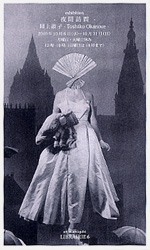 |
|
| Toshiko Okanoue: Visit in the Night |
| 6 - 31 October 2010 |
LIBRAIRIE 6
(Tokyo) |
 |
| Photo collage artist Okanoue (b.1928) made her artistic debut at age 25 in 1953 with her "Toshiko Okanoue Collage Exhibition." Her meticulous, sensitive, surrealism-inspired works earned her champions like the avant-garde poet Shuzo Takiguchi, but after only a few years of activity she virtually disappeared from sight until her work suddenly found the spotlight again in the 1990s. This show featured not only four original compositions from the fifties, but also silkscreened reproductions and excerpts from her Nazreeli Press portfolio. Though few in number, her originals were worth a trip to this rare show. |
|
|
|
|
 |
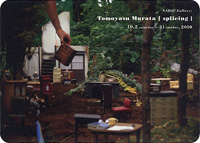 |
 |
| Tomoyasu Murata: splicing |
| 2 - 31 October 2010 |
NADiff Gallery
(Tokyo) |
 |
| On the gallery floor sits a 1:10 scale model of a retro Showa-era barbershop, replete with faithfully rendered chairs, mirrors, and sinks. The gallery walls are painted black and the model is illuminated by only a few small lamps. With no human figures in sight, the work is tinged with an air of solitude and pathos. Presumably built as a set for puppet animation, it is a lovely work of art in its own right. |
|
|
|
|
|
|
 |
 |
| Okazaki Kazuo: Garden of Supplements |
| 11 September - 3 November 2010 |
The Museum of Modern Art, Kamakura
(Kanagawa) |
 |
| Okazaki's focus is on his concept of "object supplements," best revealed to date through his Hisashi series. Though elusive in definition, this seems to involve the creation of objects that provide something missing from or overlooked in existing objects. Sculpture molds come to mind: an example is his "Ode to William Tell," in which he has drilled holes in plaster removed from the cast of an apple. There is something distinctively Japanese in Okazaki's mix of conceptual art and surrealism. |
|
 |
 |
 |
| Kohei Nawa: Synthesis |
| 24 September - 30 October 2010 |
SCAI the Bathhouse
(Tokyo) |
 |
| On the wall of one gallery were sheets of paper covered with dots like a myriad rain droplets. Printed, I assumed, but closer inspection revealed lovely circles seemingly created by chance, like stains from coffee carefully spilled one drop at a time. Another gallery contained several deer -- in their entirety, or their mounted heads -- covered in clear beads. Typical, I thought, until I realized that these images were just a little off -- too many antlers, or legs, as if two animals had been superimposed. Perhaps this is the astigmatic effect of blurring the original outlines of an object with all those beads -- or rather, the object itself is rendered astigmatic. |
|
|
|
|
 |
|